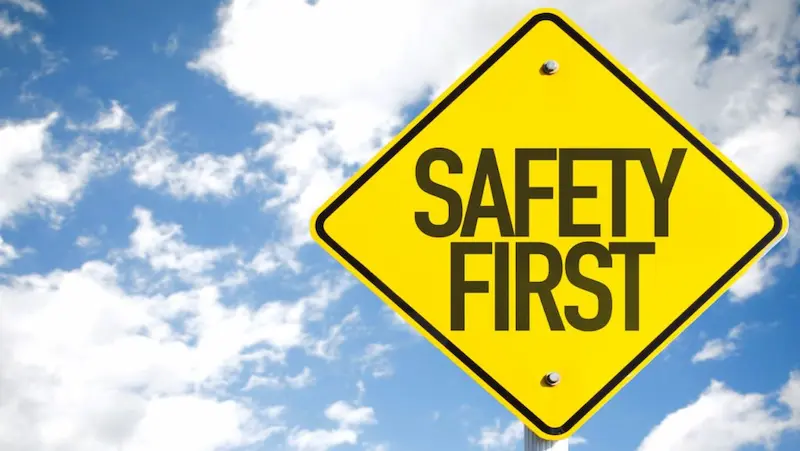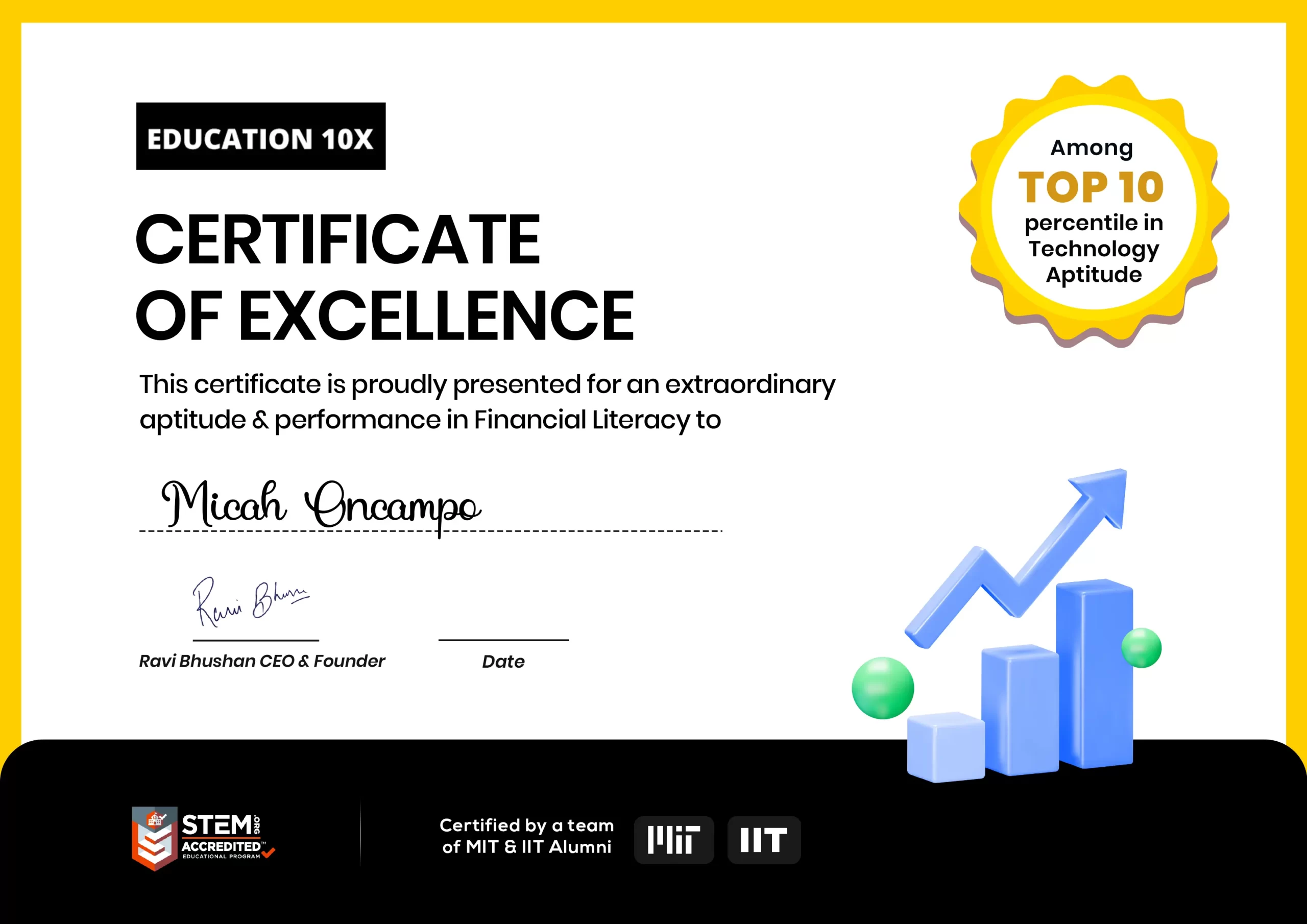Choosing the best bank account for kids requires careful consideration. Look for accounts with low fees, high-interest rates, educational tools, and parental controls. Consider the bank’s reputation, accessibility, and online banking features. Teach financial literacy and set goals to nurture their savings habits from an early age.
Table of contents
Introduction
Teaching financial literacy to kids is one of the most important things a parent can do. It’s never too early to start, and there are many ways to make it fun and engaging. By teaching kids about money, you’re setting them up for a lifetime of financial success.
There are many benefits to opening a bank account for your child. A bank account can help your child learn about saving, budgeting, and money management for kids. It can also help them build good financial habits that will last a lifetime.
When choosing a bank account for your child, there are a few things to keep in mind. First, consider your child’s age and financial needs. Second, compare fees and interest rates. Third, look for a bank that offers features that are appealing to kids, such as educational resources or ATM access.
Here are some of the benefits of opening a bank account for your child:
- Learning about saving: A bank account can help your child learn about the importance of saving money. They can see their savings grow over time, which can help them develop a habit of saving for the future.
- Learning about budgeting: A bank account can help your child learn about budgeting and how to manage their money. They can track their spending and see where their money is going. This can help them make better financial decisions in the future.
- Building good financial habits: A bank account can help your child build good financial habits that will last a lifetime. These habits include saving, budgeting, and managing money responsibly.
If you’re looking for a way to help your child learn about money and build good financial habits, opening a bank account is a great option. There are many different bank accounts available, so you can find one that’s right for your child’s age and financial needs.
The Importance of Teaching Financial Literacy to Children
Financial literacy is the ability to understand and manage money. It’s an essential life skill that everyone should have, but it’s often not taught in schools. That’s why it’s so important for parents to teach their children about money.
There are many reasons why teaching financial literacy to children is important. First, it can help them avoid debt and financial problems in the future. Second, it can help them make better financial decisions. Third, it can help them achieve their financial goals.
There are many ways to teach financial literacy activities for kids. You can start by talking to them about money and explaining how it works. You can also set a good example by managing your own money wisely. And you can encourage them to save money and learn about investing.
Teaching financial literacy to children is a gift that will last a lifetime. It can help them achieve their financial goals and live a more secure and comfortable life.
Benefits of Opening a Bank Account for Kids
There are many benefits to opening a bank account for your child. Here are a few of the most important:
- Helps your child learn about money: A bank account can help your child learn about the value of money and how to save it. They can see their savings grow over time, which can help them develop a habit of saving for the future.
- Provides a safe place to store money: A bank account is a safe place for your child to store their money.
- Gives your child access to ATMs: Many banks offer ATM cards that allow your child to access their money at any time. This can be helpful for kids who want to buy things on their own or who need to withdraw money for an emergency.
- Allows your child to start building credit: Some banks offer credit cards for kids. This can be a great way for your child to start building their credit history, which will be helpful when they apply for loans or credit cards in the future.
If you’re thinking about opening a bank account for your child, there are a few things you’ll need to do. First, you’ll need to choose a bank that offers accounts for kids. Second, you’ll need to provide some basic information about your child, such as their name, date of birth, and Social Security number. Third, you’ll need to deposit some money into the account.
Opening a bank account for your child is a great way to help them learn about money and build good financial habits. It’s a gift that will last a lifetime.thumb_upthumb_downuploadGoogle itmore_vert
Why Open a Bank Account for Your Child?

There are many reasons why you should open a bank account for your child. Here are a few of the most important ones:
- To teach them about money management. A bank account can help your child learn about the importance of saving, budgeting, and spending wisely. When they have their own account, they can see how their money grows over time and how it can be used to reach their goals.
- To give them a safe place to keep their money. A bank account is a safe place for your child to keep their money. It’s FDIC insured, so their money is protected in case the bank fails.
- To help them build credit. When your child makes regular deposits to their bank account, it can help them build a positive credit history. This will make it easier for them to get loans and credit cards in the future.
- To give them a head start on saving for college. Many banks offer savings accounts that are specifically designed for college savings. These accounts often have higher interest rates than regular savings accounts, and they may also offer tax breaks.
The Advantages of Early Financial Education
Financial education is important for everyone, but it’s especially important for children. Starting them off on the right foot can help them avoid financial problems in the future.
There are many benefits to teaching children about money management at a young age. Here are a few of the most important ones:
- They’ll be more likely to save money. Studies have shown that people who learn about money management at a young age are more likely to save money as adults.
- They’ll be less likely to go into debt. People who understand how to manage their money are less likely to take on too much debt.
- They’ll be better prepared for life. Financial literacy is an essential life skill. By teaching your children about money management, you’re giving them the tools they need to succeed in life.
How a Bank Account Can Help Children Learn About Money Management
A bank account is a great way to teach your children about money management. Here are a few ways you can use a bank account to help your child learn about money:
- Set up a savings goal. Help your child set a savings goal, such as saving up for a new toy or a vacation. When they reach their goal, celebrate their accomplishment!
- Talk about interest. Explain to your child how interest works. Help them see how their money grows over time when they keep it in a savings account.
- Teach them about budgeting. Help your child create a budget and stick to it. This will help them learn how to make their money go further.
- Encourage them to make deposits. Encourage your child to make regular deposits to their savings account. This will help them build their savings and reach their financial goals.
By opening a bank account for your child and teaching them about money management, along with incorporating minute to win it games for kids, you’re giving them a valuable gift that will last a lifetime.

How to Choose the Right Bank Account for Your Child
Opening a bank account for your child is a great way to teach them about money management and financial responsibility. There are many different kids’ bank accounts available, so it’s important to compare your options before choosing one. Here are some factors to consider when selecting a kids’ bank account:
- Interest rates: Some kids’ bank accounts offer interest on your child’s savings. This is a great way to help your child’s money grow over time.
- Fees: Some kids’ bank accounts charge fees for things like ATM withdrawals, online banking, and overdrafts. Be sure to check the fees carefully before opening an account.
- Parental controls: Some kids’ bank accounts allow parents to set limits on how much their child can spend or withdraw from the account. This can be a helpful way to teach your child about budgeting and spending responsibly.
- Features: Some kids’ bank accounts come with features like debit cards, mobile apps, and online banking. These features can make it easier for your child to manage their money and make transactions.
Once you’ve considered these factors, you can start comparing different kids’ bank accounts, all while incorporating brain teasers for kids to make the process engaging and educational. There are many different banks and credit unions that offer kids’ bank accounts, so you should be able to find one that meets your needs.
Here are a few tips for evaluating different kids’ bank accounts:
- Read the fine print: Before you open an account, be sure to read the terms and conditions carefully. This includes the interest rates, fees, and parental controls.
- Compare different options: There are many different kids’ bank accounts available, so be sure to compare your options before choosing one.
- Talk to your child: It’s important to talk to your child about the features and benefits of different kids’ bank accounts. This will help them understand why you’re opening an account for them and how they can use it to manage their money.
Opening a bank account for your child is a great way to teach them about money management and financial responsibility. By considering the factors above, you can choose the right kids’ bank account for your child and their needs.
Here are some additional tips for opening a bank account for your child:
- Choose a bank that has a branch in your community. This will make it easier for you and your child to deposit money into the account, withdraw cash, and speak with a banker if needed.
- Make sure the bank offers online banking and mobile banking. This will allow you and your child to check balances, transfer money, and pay bills online.
- Set up parental controls on the account. This will allow you to limit how much your child can spend and withdraw from the account.
- Talk to your child about the importance of saving money. Help them set financial goals and teach them how to budget their money.
By following these tips, you can help your child learn about money management, develop good habits for kids, and foster financial responsibility from an early age.

Step-by-Step Guide to Opening a Bank Account for Your Child
Here is a step-by-step guide on how to open a bank account for your child:
- Choose a bank. There are many different banks that offer accounts for minors, so it’s important to do your research and choose one that’s right for your child. Consider factors such as the bank’s fees, interest rates, and features when making your decision.
- Gather the required documentation. The documentation required to open a bank account for a minor will vary from bank to bank, but typically includes the following:
- The child’s birth certificate
- The parent or guardian’s ID
- Proof of address
- A signature card for the child and the parent or guardian
- Visit the bank in person. The easiest way to open a bank account for a minor is to visit the bank in person. This will allow you to speak with a banker and answer any questions you may have.
- Fill out the account application. The bank will provide you with an account application form. Be sure to fill out the form completely and accurately.
- Provide the required documentation. Once you have filled out the application form, you will need to provide the required documentation to the bank.
- Sign the signature cards. Both the child and the parent or guardian will need to sign the signature cards.
- Make a deposit. You will need to make a deposit into the account. The minimum deposit amount will vary from bank to bank.
- Receive your account information. Once the account has been opened, you will receive your account information, including your account number, routing number, and debit card.
Specific requirements for different banks or jurisdictions
The requirements for opening a bank account for a minor may vary from bank to bank or jurisdiction. For example, some banks may require that the child be a resident of the state in which the bank is located. Additionally, some banks may have higher minimum deposit requirements for minor accounts.
It is important to contact the bank you are interested in opening an account with to verify the specific requirements.
Benefits of opening a bank account for your child
There are many benefits to opening a bank account for your child. A bank account can help your child learn about money management and saving. It can also help your child establish a credit history, which can be helpful when they apply for loans or credit cards in the future.
Tips for teaching your child about money
Once you have opened a bank account for your child, you can start teaching them about money management. Here are a few tips:
- Talk to your child about the importance of saving money. Explain to them that saving money can help them reach their goals, such as buying a new toy or saving up for college.
- Help your child set up a budget. This will help them track their spending and make sure they are not spending more money than they earn.
- Encourage your child to deposit their allowance or earnings from a part-time job into their bank account. This will help them get into the habit of saving money.
- Make it fun! There are many ways to make learning money for kids to be fun. You can play banking game for kids, read books, or watch educational videos together.
By opening a bank account for your child and teaching them about money management, you can help them set themselves up for financial success in the future.
Teaching Financial Literacy through a Kids’ Bank Account
Teaching financial literacy to kids is important, and a kids’ bank account can be a great tool for doing so. Here are some suggestions on how parents can use a kids’ bank account to teach financial literacy:

- Set up a savings goal. Help your child set a savings goal, such as saving for a new bike or a trip to the zoo. This will help them understand the importance of saving money and working towards a goal.
- Make them earn their allowance. Don’t just give your child an allowance for free. Make them earn it by doing chores around the house. This will teach them the value of hard work and earning money.
- Let them choose how to spend their money. Once your child has earned their allowance, let them choose how to spend it. This will help them learn about budgeting for kids and making choices about what to spend their money on.
- Take them to the bank. Take your child to the bank so they can see how their money is being stored and how it can be used to make purchases. This will help them understand how the banking system works.
- Talk to them about money. Talk to your child about money on a regular basis. This will help them learn about financial concepts such as interest, inflation, and debt.
Here are some age-appropriate money management activities that parents can do with their kids:
- For young children: Play games and activities that teach about money, such as Monopoly or The Game of Life.
- For elementary school children: Help your child set up a savings account and teach them how to balance their checkbook.
- For middle school children: Talk to your child about credit and debt. Help them understand the importance of building good credit and avoiding debt.
- For high school children: Help your child apply for a part-time job and teach them how to manage their income and expenses.
Teaching financial literacy to kids is an important investment in their future. By using a kids’ bank account and other activities, parents can help their kids develop the financial skills they need to be successful in life.
Safety and Security Considerations

As more and more children are using bank accounts, it’s important to be aware of the safety and security measures in place to protect their money, especially when selecting the best savings account for kids. Here are some tips for ensuring your child’s account security:
- Choose a strong password. This should be a combination of upper and lowercase letters, numbers, and symbols. Don’t use anything that can be easily guessed, such as your child’s name, birthday, or address.
- Keep your password confidential. Don’t share it with anyone, not even your child.
- Monitor your child’s account activity. Review their statements regularly to make sure there are no unauthorized transactions.
- Use a secure internet connection. When your child is using their bank account online, make sure they’re using a secure internet connection. This means using a password-protected Wi-Fi network or a wired connection.
- Be aware of phishing scams. Phishing scams are emails or text messages that appear to be from a legitimate source, such as a bank or credit card company. They often contain links that, when clicked, will take the user to a fake website that looks like the real website. Once the user enters their personal information on the fake website, the scammer can steal it.
- Report any suspicious activity to your bank immediately. If you see any unauthorized transactions on your child’s account, or if you receive a phishing email or text message, report it to your bank immediately.
By following these tips, you can help to keep your child’s bank account safe and secure.
Conclusion
In conclusion, selecting the best bank account for kids is a crucial decision that sets the foundation for their financial well-being. By considering key factors such as account features, fees, accessibility, educational resources, and parental controls, parents can make an informed choice that empowers their children to develop healthy financial habits.
Whether it’s a basic savings account, a teen checking account, or a prepaid card, the right bank account can instill valuable lessons about saving, budgeting, and responsible money management. By nurturing their financial literacy from an early age, we can equip the next generation with the tools they need to thrive in an increasingly complex financial landscape. So, take the time to research, compare options, and make a decision that will support your child’s financial journey for years to come.
To get your hands on more educational and free resources on coding for kids, robotics for kids, financial education for kids, etc., do check out the BrightCHAMPS Page now!
To get your hands on more such educational and free resources on coding for kids, robotics courses for kids, game development, financial literacy for kids, etc., do check out the Brightchamps Blog Page now!
Frequently Asked Questions
A bank account for kids is a financial account designed specifically for children, allowing them to save money, learn about banking, and manage their finances with parental supervision.
Opening a bank account for your child helps teach them valuable financial skills, such as saving, budgeting, and responsible money management from an early age.
The benefits of a bank account for kids include fostering financial responsibility, promoting savings habits, earning interest on deposits, and providing a secure place to keep money.
To choose the right bank account for your child, consider factors such as age requirements, fees and charges, interest rates, accessibility, online banking options, and parental controls.
Typically, you’ll need to provide identification documents for both you and your child, such as birth certificates, social security numbers, and proof of address, to open a bank account for a child.
Depending on their age, some children may be able to manage their bank account independently, but it’s recommended to supervise and guide them in their financial activities until they develop sufficient understanding.
Fees associated with kids’ bank accounts vary among banks but can include monthly maintenance fees, transaction fees, minimum balance fees, and fees for additional services like checks or overdraft protection.
Age restrictions for opening a bank account for kids may vary depending on the bank, but most banks offer options for children as young as 13 or even younger with parental consent.
You can teach financial literacy through your child’s bank account by involving them in saving goals, tracking expenses, discussing money management, and encouraging responsible spending and saving habits.
Some banks offer special features or perks for kids’ accounts, such as educational resources, rewards programs, waived fees, and interactive online platforms tailored to teaching financial literacy in a fun and engaging way.


 We are an army of educators and passionate learners from BrightChamps family, committed to providing free learning resources to kids, parents & students.
We are an army of educators and passionate learners from BrightChamps family, committed to providing free learning resources to kids, parents & students.







